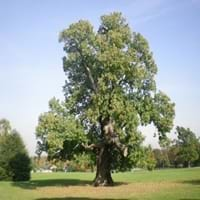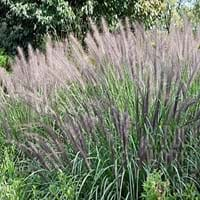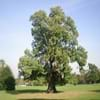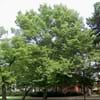Life Span
Perennial
Perennial
Origin
China, Korea
Eastern Asia, Australia
Types
Not Available
Not Available
Habitat
disturbed sites, Forest edges
Grassland, open forests, wastelands, Wet lands
USDA Hardiness Zone
4-8
5-9
Sunset Zone
2a, 2b, 3a, 3b, 4, 5, 6, 7, 8, 9, 14, 15, 16, 17
3a, 3b, 4, 5, 6, 7, 8, 9, 10, 11, 12, 13, 14, 15, 16, 17, 18, 19, 20, 21, 22, 23, 24
Habit
Spreading
Clump-Forming
Flower Color
White, Light Yellow, Ivory
Ivory, Rose, Tan
Flower Color Modifier
Bicolor
Bicolor
Fruit Color
Light Green, Chartreuse
Sandy Brown, Tan
Leaf Color in Spring
Green, Gray Green
Green, Light Green
Leaf Color in Summer
Gray Green, Dark Green
Light Green
Leaf Color in Fall
Yellow, Gold, Tan
Green, Light Green, Tan
Leaf Color in Winter
Not Available
Tan, Sandy Brown
Leaf Shape
Lobed
Conduplicate
Plant Season
Spring, Summer, Fall
Spring, Summer, Fall, Winter
Sunlight
Full Sun
Full Sun, Partial Sun
Type of Soil
Clay, Loam
Clay, Loam, Sand
The pH of Soil
Acidic, Neutral
Acidic, Neutral, Alkaline
Soil Drainage
Well drained
Well drained
Bloom Time
Late Spring, Early Summer
Summer, Late Summer, Early Fall, Fall, Late Fall
Tolerances
Drought
Drought
Where to Plant?
Ground
Container, Ground, Pot
How to Plant?
Seedlings, Stem Planting
Divison, Seedlings
Plant Maintenance
Low
Medium
Watering Requirements
Do Not over Water, Medium, Requires watering in the growing season
occasional watering once established
In Summer
Adequately
Lots of watering
In Spring
Moderate
Moderate
In Winter
Average Water
Average Water
Soil pH
Acidic, Neutral
Acidic, Neutral, Alkaline
Soil Type
Clay, Loam
Clay, Loam, Sand
Soil Drainage Capacity
Well drained
Well drained
Sun Exposure
Full Sun
Full Sun, Partial Sun
Pruning
Prune in fall, Remove damaged leaves, Remove dead branches, Remove dead leaves
Remove damaged leaves, Remove dead branches, Remove dead leaves
Fertilizers
Nitrogen, Potassium
All-Purpose Liquid Fertilizer
Pests and Diseases
Beetles, Leafhoppers
eyespot, Leaf spot, Rust
Plant Tolerance
Drought
Drought
Flower Petal Number
Not Available
Single
Foliage Texture
Coarse
Fine
Foliage Sheen
Glossy
Glossy
Attracts
Not Available
songbirds
Allergy
Mild Allergen
Pollen
Aesthetic Uses
Not Used For Aesthetic Purpose
Borders, Ground Cover
Beauty Benefits
Not Available
Not Available
Environmental Uses
Air purification, Food for animals, Food for birds, Food for insects, Nesting sites for birds, Prevent Soil Erosion
Air purification
Medicinal Uses
Low calories, Nutrients
Not Available
Part of Plant Used
Fruits, Seeds, Stem
Seeds
Other Uses
Food for animals, Used as firewood, Used As Food, Used in biomass
Used like flour
Used As Indoor Plant
No
No
Used As Outdoor Plant
Yes
Yes
Garden Design
Edible, Feature Plant, Shade Trees, Street Trees
Dried Flower / Everlasting, Bedding Plant, Container, Cutflower, Feature Plant, Foundation, Groundcover, Mixed Border, Rock Garden / Wall
Botanical Name
CASTANEA mollissima
PENNISETUM alopecuroides
Common Name
Chinese Chestnut
Chinese Fountaingrass, Fountaingrass
In Hindi
चीनी अखरोट
Fountaingrass
In German
chinesische Kastanie
Fountaingrass
In French
châtaignier chinois
Fountaingrass
In Spanish
Castaño chino
Fountaingrass
In Greek
Κινέζικο κάστανο
Fountaingrass
In Portuguese
castanha chinesa
Fountaingrass
In Polish
Kasztan chiński
Fountaingrass
In Latin
Chinese Chestnut
Fountaingrass
Phylum
Tracheophyta
Magnoliophyta
Class
Magnoliopsida
Liliopsida
Genus
Castanea
Pennisetum
Clade
Angiosperms, Eudicots, Rosids
Angiosperms, Commelinids, Monocots
Tribe
Gloxinieae
Paniceae
Subfamily
Cassidinae
Panicoideae
Number of Species
Not Available
Not Available
Season and Care of Chinese Chestnut and Fountaingrass
Season and care of Chinese Chestnut and Fountaingrass is important to know. While considering everything about Chinese Chestnut and Fountaingrass Care, growing season is an essential factor. Chinese Chestnut season is Spring, Summer and Fall and Fountaingrass season is Spring, Summer and Fall. The type of soil for Chinese Chestnut is Clay, Loam and for Fountaingrass is Clay, Loam, Sand while the PH of soil for Chinese Chestnut is Acidic, Neutral and for Fountaingrass is Acidic, Neutral, Alkaline.
Chinese Chestnut and Fountaingrass Physical Information
Chinese Chestnut and Fountaingrass physical information is very important for comparison. Chinese Chestnut height is 1,220.00 cm and width 1,220.00 cm whereas Fountaingrass height is 60.00 cm and width 60.00 cm. The color specification of Chinese Chestnut and Fountaingrass are as follows:
Chinese Chestnut flower color: White, Light Yellow and Ivory
Chinese Chestnut leaf color: Green and Gray Green
Fountaingrass flower color: Ivory, Rose and Tan
- Fountaingrass leaf color: Green and Light Green
Care of Chinese Chestnut and Fountaingrass
Care of Chinese Chestnut and Fountaingrass include pruning, fertilizers, watering etc. Chinese Chestnut pruning is done Prune in fall, Remove damaged leaves, Remove dead branches and Remove dead leaves and Fountaingrass pruning is done Remove damaged leaves, Remove dead branches and Remove dead leaves. In summer Chinese Chestnut needs Adequately and in winter, it needs Average Water. Whereas, in summer Fountaingrass needs Lots of watering and in winter, it needs Average Water.





